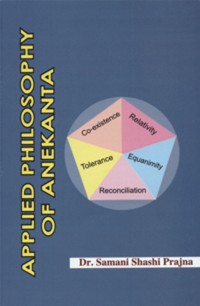The Reality (sat) or the substance (dravya) is an object of knowledge. Naya, anekānta and syādvāda are essential forms of the knowledge, and are the means to know it, sometimes part by part. The attempt to know the same reality through various propensities forms the basis of nayavāda, anekāntavāda and syādvāda. The doctrine of naya is the process of knowing the Reality part by part. From the point of substantial naya, the substances is a real object, the mode is an unreal object. From the point of modal naya, it is vice versa.[1]
The substantial naya is the standpoint to comprehend the substance; the mode does not fall in its domain, but it does not mean that it denies the mode. Therefore, though aikantika, such standpoint is valid point of view (naya). If the substantial standpoint denies the mode, it would become invalid (durnaya).[2] Similarly the modal point of view comprehends the mode, but it does not deny the substance. Therefore, though partial, it is valid view-point (naya). If it denies the substance, being absolutely aikāntika, would become invalid. The non-relative one-sided view has created many problems in the field of philosophical thought. The theory of anekānta provides a solution to those problems.[3] If substantial or modal nayas were to be non-relative, anekānta would not have arisen. The reality has an innate capacity of changing and change is thus an essential component of Reality. Permanence and change cannot be separated totally, they cannot exist independently. It is to deny their independence that non-absolutism arose. The non-absolutist realism of the Jains neither endorses absolute eternalism nor absolute fluxism, but explains both these extremes as real with reference to different aspects of the same Reality. Now let us proceed to their infinite possibilities in a Reality.
 Dr. Samani Shashi Pragya
Dr. Samani Shashi Pragya

